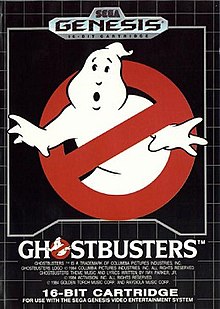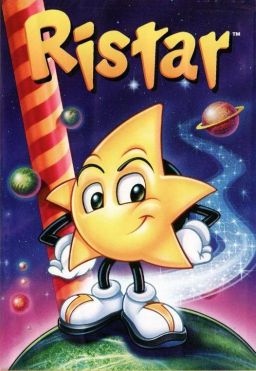
Ristar is a 1995 platform game developed and published by Sega for the Sega Genesis. The game stars an anthropomorphic cartoon star who uses his hands and long, stretchable arms to both move and fight enemies. Reception for the game was generally positive, but the game's initial release was overshadowed due to the imminent ending of the Genesis's lifecycle and the succession of the Sega Saturn and other fifth generation video game consoles.

Altered Beast is a 1988 beat 'em up arcade video game developed and published by Sega. The game is set in Ancient Greece and follows a player character chosen by Zeus to rescue his daughter Athena from the demonic ruler of the underworld, Neff. Through the use of power-ups, the player character can assume the form of different magical beasts. It was ported to several home video game consoles and home computers. It was the pack-in game for the Mega Drive when that system launched in 1988.
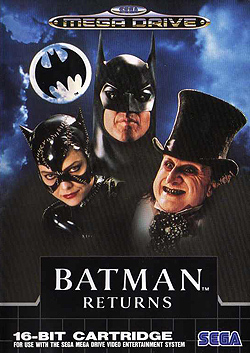
Batman Returns is the name of several video games for various platforms based on the 1992 film of the same name.

Rocket Knight Adventures is a platform game developed and published by Konami for the Sega Genesis. The game involves Sparkster, an opossum knight who wields a rocket pack and sword that can emit energy projectiles as he attempts to stop the Devotindos Empire, an evil empire that attempts to break the seal of a powerful starship.
Michael Jackson's Moonwalker is the name of several video games based on the 1988 Michael Jackson film Moonwalker. Sega developed two beat 'em ups, released in 1990; one released in arcades and another released for the Sega Genesis and Master System consoles. U.S. Gold also published various games for home computers the same year. Each of the games' plots loosely follows the "Smooth Criminal" segment of the film, in which Jackson rescues kidnapped children from the evil Mr. Big, and incorporates synthesized versions of some of the musician's songs. Following Moonwalker, Jackson collaborated with Sega on several other video games.

Flicky is a platform game developed by Sega and released as an arcade video game in May 1984. It was licensed to Bally Midway for distribution in the United States. In Flicky, the player controls the eponymous blue bird and must gather all the small birds called Chirps in each round and bring them safely to the exit. There are cat and lizard enemies which can disperse the Chirps and kill the player, but Flicky can use items on the playing field to protect herself and the Chirps from danger.

The Revenge of Shinobi, released in Japan as The Super Shinobi, is a hack-and-slash action video game developed and published by Sega in 1989. It was the first Shinobi game developed for the Sega Genesis, and was later released on the coin-operated version of that console, the Mega-Tech.

Mega Man is an action-platform video game developed by Freestyle for the Sega Game Gear, and saw a North America-only release in October 1995. The game was sublicensed by British publisher U.S. Gold from Japanese-based company and creator of Mega Man Capcom. The game features Mega Man fighting against the mad scientist Dr. Wily and the six Robot Masters under his control, and features bosses and stages from Mega Man 4 and Mega Man 5.

Castle of Illusion Starring Mickey Mouse is a 1990 platform game developed and published by Sega and released for the Mega Drive/Genesis. An 8-bit version of the game was later released for the Master System and Game Gear. The game follows Mickey Mouse on a quest to save Minnie Mouse from the evil witch Mizrabel. It is the first game in Sega's Illusion video game series starring Mickey.

Alisia Dragoon is a 1992 platform game developed by Game Arts for the Sega Genesis. The player controls Alisia, a young woman who is on a quest to avenge her father and save the world. She can fire lightning from her hands and summon four faithful beasts to aid her. Alisia Dragoon was published outside of Japan by Sega. Despite the acclaim the game received, it was not a commercial success. The game was later included on the Sega Genesis Mini and Nintendo Switch Online.

Fantasia is a side-scrolling video game developed by Infogrames and produced by Sega for its own Mega Drive/Genesis system. The game was loosely based on the film of the same name.

Golden Axe II is a side-scrolling beat 'em up video game developed and published by Sega, first released on the Sega Mega Drive in December 1991. It is the home console sequel to the popular game Golden Axe, marking the second game in the series, though the arcade did see a sequel of its own in 1992, titled Golden Axe: The Revenge of Death Adder. Golden Axe II was only released on the Mega Drive, while the original was released on many other platforms. The game later appeared in Sonic's Ultimate Genesis Collection for Xbox 360 and PlayStation 3, as an iOS app on iTunes, and on the Nintendo Switch Online + Expansion Pack.
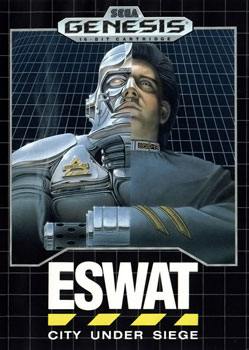
ESWAT: City Under Siege, released in Japan as Cyber Police ESWAT, is a 1990 side scrolling action platform video game developed and published by Sega for the Sega Genesis and Sega Master System video game consoles.

Indiana Jones' Greatest Adventures is a 1994 platform video game released for the Super Nintendo Entertainment System. It is a video game adaptation of the Indiana Jones films Raiders of the Lost Ark (1981), Indiana Jones and the Temple of Doom (1984), and Indiana Jones and the Last Crusade (1989). The game was developed by Factor 5 and published by JVC Musical Industries. The story is told through cutscenes and text and is mostly faithful to the movies. Its release coincided with that of Super Star Wars: Return of the Jedi, also released by JVC and LucasArts and in the same platform style as the Super Star Wars trilogy.

Batman: The Video Game is a platform game developed by Sunsoft for the Nintendo Entertainment System, loosely based on the 1989 film Batman. The game contains five levels culminating in a showdown with the Joker in the bell tower of Gotham Cathedral. It was received well.
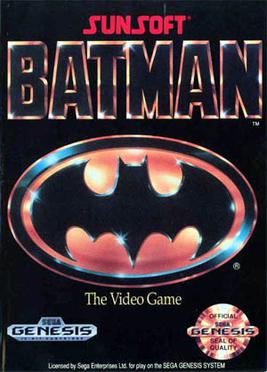
Batman is a video game developed by Sunsoft and released for the Sega Mega Drive in 1990. It was inspired by the 1989 Tim Burton-directed Batman film. The game is more faithful to the film's plot than the NES game of the same name and includes levels in which the player controls Batman's vehicles.

The Real Ghostbusters is a 1987 shoot 'em up arcade game developed and published by Data East. It is loosely based on the animated series of the same name. In Japan, Data East released it as a non-Ghostbusters arcade game under the title Meikyuu Hunter G. In 1989, Activision published The Real Ghostbusters for Amiga, Amstrad CPC, Atari ST, Commodore 64, and ZX Spectrum.
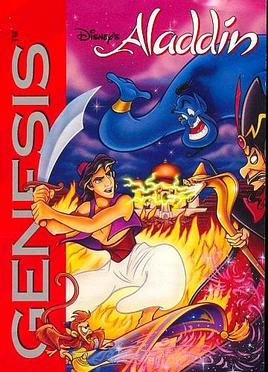
Disney's Aladdin is a platform game based on the 1992 film of the same name developed by Virgin Games USA. The game was released by Sega for the Sega Genesis on November 11, 1993 as one of several games based on the film, including another game that was released in the same month by Capcom for the Super NES.
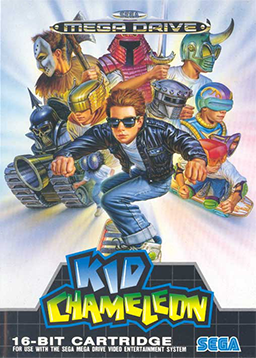
Kid Chameleon is a 1992 platform game developed and published by Sega released for the Sega Genesis. In the game, a boss character with artificial intelligence in a virtual reality video game begins abducting players and the main protagonist Casey goes in to beat the game and rescue them. He does this by using masks to shapeshift into different characters in order to use different abilities. It was later released in Japan as Chameleon Kid. After its initial release in 1992 for the Genesis, it was later re-released a number of times in the 2000s, including part of the Sega Smash Pack 2 for the PC in 2000, the Sega Genesis Collection for the PlayStation Portable and PlayStation 2 in 2006, as a digital release on the Wii's Virtual Console in 2007, Sonic's Ultimate Genesis Collection for Xbox 360 and PlayStation 3 in 2009 and for the Sega Forever service in 2017.
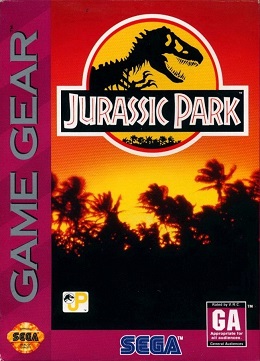
Jurassic Park is a 1993 platform game developed and published by Sega for the Game Gear. Another version, with identical gameplay, was also released for the Master System. The game is based on the 1993 film of the same name. It was praised for its graphics, but criticized for its short length and easy gameplay.
